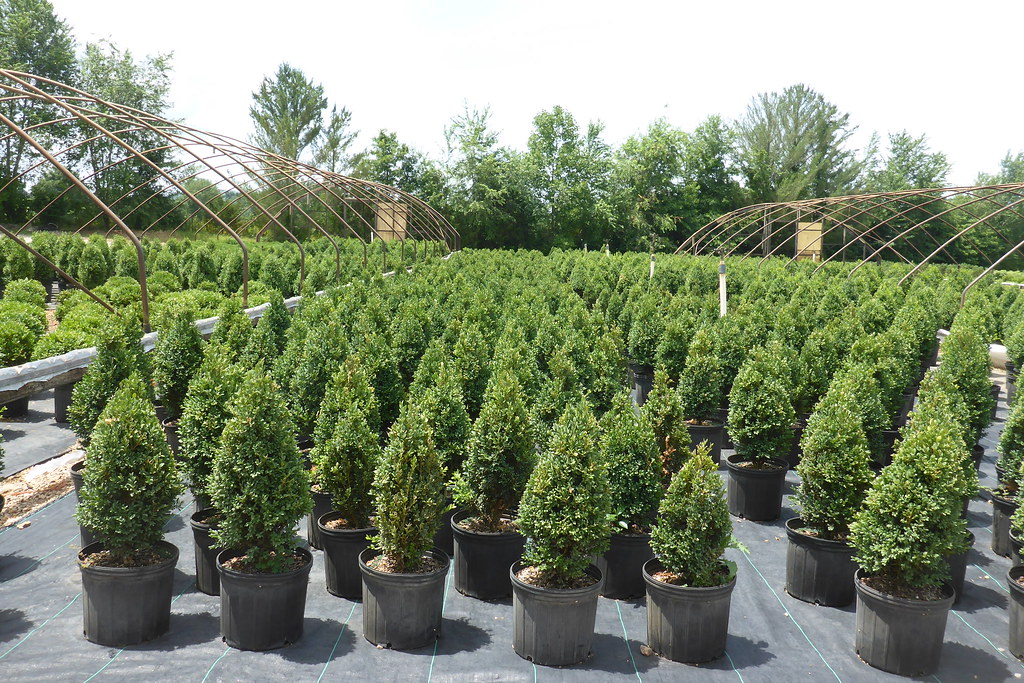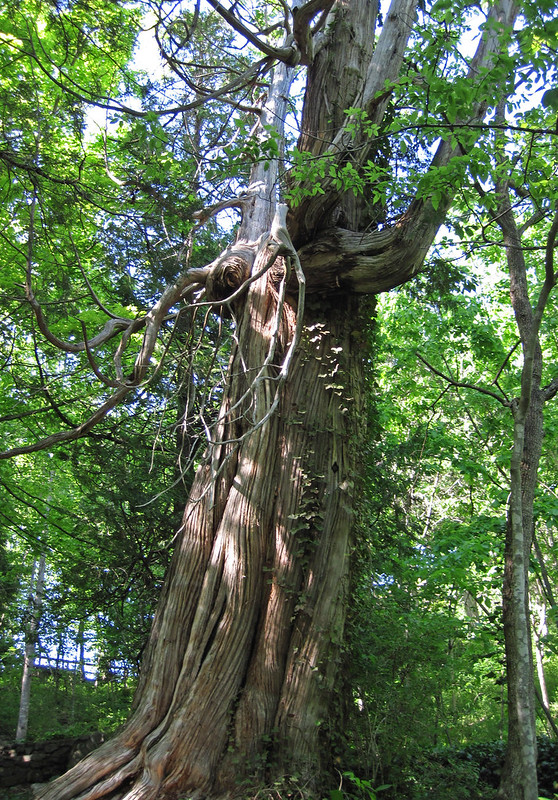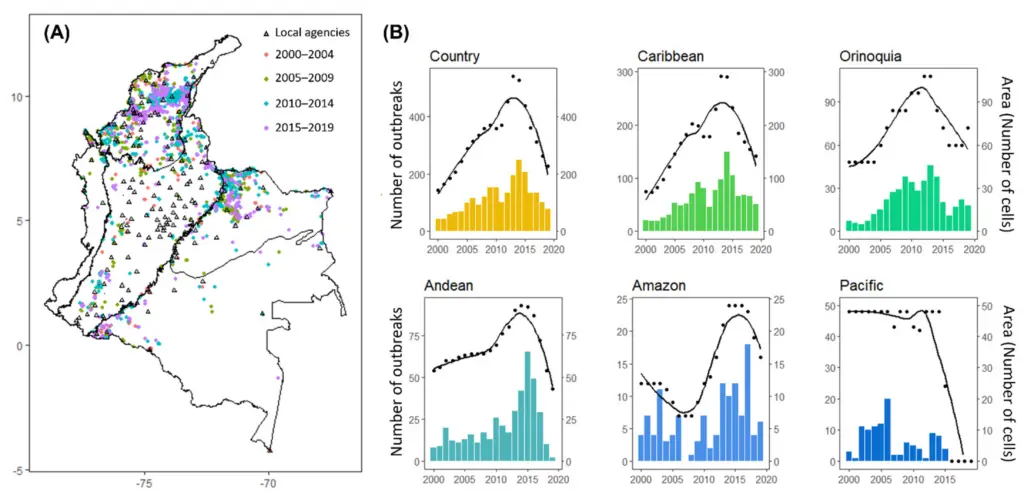Cedar trees are a type of evergreen tree that is native to North America. They are known for their tall, straight trunks and reddish-brown bark. Cedar trees can grow to be over 100 feet tall and live for hundreds of years.
Cedar trees are relatively easy to care for compared to other types of trees. They do not require as much water or pruning as other trees. However, there are a few things you should keep in mind when caring for your cedar tree.
- Choose a location for your cedar tree that receives full sun to partial shade and has well-drained soil
- Dig a hole twice the width of the tree’s root ball and just as deep
- Set the tree in the hole so that the top of the root ball is level with the ground around it
- Backfill the hole with soil, tamping it down as you go to remove any air pockets
- Water deeply immediately after planting and then weekly during its first growing season to help it establish roots in its new home
Do Cedar Trees Need Trimming?
Cedar trees are one of the most popular types of trees to plant in North America. They are known for their beautiful, fragrant wood and their ability to thrive in a variety of climates. However, even cedar trees need a little bit of care from time to time to keep them looking their best.
If your cedar tree is starting to look a bit tired, there are a few things you can do to rejuvenate it. One of the best ways to rejuvenate a cedar tree is to prune it back. This will encourage new growth and help the tree to fill out.
It is important not to over-prune, however, as this can damage the tree. When pruning, be sure to only remove dead or dying branches. Another way to rejuvenate a cedar tree is by fertilizing it.
This will give the tree the nutrients it needs to produce new growth. You can purchase fertilizer specifically for cedars at most garden stores. Be sure to follow the directions on the package when applying fertilizer so that you do not damage the roots of your tree.
If your cedar tree is particularly unhealthy, you may need to consult with a professional arborist or horticulturist for help getting it back on track. Sometimes, trees become stressed due to disease or pests and require special treatment in order to recover.
Why is Our Cedar Tree Turning Brown?
A cedar tree turning brown can be caused by a number of things. It could be due to drought, disease, pests, or even just old age. If you’re noticing your cedar tree turning brown, it’s important to first figure out what the cause may be.
Once you know the cause, you can then take steps to try and remedy the problem.
One common reason for a cedar tree to turn brown is drought stress. This happens when the tree doesn’t get enough water and begins to dry out.
The leaves will start to turn brown and drop off, and the branches may become brittle and break easily. If you think drought stress may be the problem, try deeply watering your cedar tree once a week. Make sure the water penetrates deep into the soil so that the roots are getting moisture as well.
Another possible reason for a cedar tree turning brown is disease or pests. There are a number of different diseases that can affect cedar trees, such as root rot or needle blight. These diseases can cause the leaves to turn brown and fall off, and they may also kill branches or even kill the entire tree if left untreated.
If you think disease might be the problem, contact a certified arborist or plant pathologist for diagnosis and treatment options.
Pests can also cause a cedar tree to turn brown by feeding on its leaves or needles. Common culprits include aphids, spider mites, and scale insects.
These pests suck out nutrients from the foliage, causing it to turn yellow or brown before eventually dying off entirely. To get rid of pests infesting your cedar tree, start by spraying them with water from a hose (this will work for most aphids).
How Do You Rejuvenate a Cedar Tree?
Cedar trees are a type of evergreen tree that is known for its thick, durable wood. The tree’s wood is often used in construction and furniture making. Cedar trees can grow to be quite large, so many people wonder if they need to be trimmed.
The answer is yes, cedar trees do need to be trimmed on occasion. However, it is not necessary to trim the tree every year. Trimming should only be done when the tree starts to look overgrown or when branches are interfering with power lines or buildings.
When trimming a cedar tree, it is important to use sharp pruning shears. This will help prevent damage to the bark and leaves of the tree. It is also important to make sure that you do not remove more than one-third of the tree’s foliage at a time. Removing too much foliage can stress the tree and cause it to become unhealthy.
How Do You Take Care of a Large Cedar Tree?
Cedar trees are lovely additions to any property, providing privacy, shade, and a natural windbreak. But cedar trees can also become overgrown and unmanageable if they’re not properly cared for. Here’s what you need to know about caring for a large cedar tree:
First, it’s important to understand that cedar trees require very little maintenance. They are naturally resistant to pests and disease, and they don’t need to be pruned or fertilized like other types of trees.
However, there are a few things you should do on a regular basis to keep your cedar tree healthy and looking its best:
- Watering: Cedar trees need deep watering about once a week during the growing season (spring through fall). Be sure to water slowly and deeply so that the roots have time to absorb the moisture. If you live in an area with high summer temperatures, you may need to water more frequently.
- Mulching: Mulch around your cedar tree with 2-3 inches of organic material such as wood chips or shredded bark. This will help retain moisture in the soil and protect the roots from extreme temperature changes.
- Pruning: Prune branches that are dead, diseased, or rubbing against each other using sharp pruning shears. You can also remove low-hanging branches if necessary. When pruning, make clean cuts at a 45-degree angle just above where the branch meets another branch or the trunk of the tree.
How to Care for Cedar Trees in Pots
Cedar trees in pots require special care to ensure that they remain healthy and thrive. Here are some tips on how to properly care for your cedar tree in a pot:
- Choose the right size pot. The pot should be large enough to accommodate the roots of the tree and allow for proper drainage.
- Place the pot in an area that receives full sun or partial shade. Cedar trees need at least six hours of sunlight each day.
- Water your cedar tree regularly, making sure to keep the soil moist but not soggy. Water more frequently during hot, dry weather.
- Fertilize your cedar tree every two weeks with a balanced fertilizer designed for evergreens. Follow the directions on the fertilizer label for best results.
- Prune your cedar tree as needed to remove dead or damaged branches and shape it as desired. Always use sharp, clean pruning shears to avoid damaging the tree.
How Fast Do Cedar Trees Grow
Cedar trees are a popular choice for landscaping because they are attractive and have many benefits. They are also fast-growing, which means they can quickly provide shade and privacy. Cedar trees can grow up to 24 inches per year, making them one of the fastest-growing trees in North America.
This makes them a great choice for homeowners who want to add privacy or shading to their property quickly. There are several things that affect how fast a cedar tree will grow, including the species of cedar, the climate, and soil conditions. In general, cedars do best in full sun and well-drained soil.
They are also tolerant of a wide range of pH levels, from 4.5 to 8.5. If you’re considering planting a cedar tree on your property, be sure to choose the right species for your needs and consult with a local nursery or landscape professional about the best way to care for it. With proper care, your cedar tree will thrive and provide you with years of enjoyment!
Growing Cedar Trees for Lumber
Cedar trees are a type of conifer that belongs to the pine family. They are native to North America and can be found in many different parts of the continent. Cedar trees are prized for their wood, which is strong and durable.
The wood is also resistant to rot and insect damage, making it a popular choice for lumber. Cedar trees can be grown in a variety of soil types and climates, but they prefer moist conditions. Cedar trees should be planted in an area that receives full sun.
They can grow to be quite large, so it is important to allow enough space for them to spread out. Once established, cedar trees require little care. They do not need to be fertilized or pruned unless you want to encourage faster growth or shape the tree.
If you do choose to fertilize your cedar tree, use a balanced fertilizer that is designed for conifers. Cedar trees can be harvested for lumber when they reach maturity, which is typically after about 20 years. The best time to harvest cedar lumber is in the spring or fall when the sap content is low.
To fell a cedar tree, use a chainsaw or another power saw; hand saws will take much longer and may cause damage to the wood.
Cedar Wood
Cedar wood is a type of softwood that is typically used for construction purposes. It is often used in the construction of log homes and cabinetry. Cedar wood is known for its natural resistance to rot and decay, making it an ideal material for outdoor use. Cedarwood can also be used for interior applications such as paneling and flooring.
Frequently Asked Questions:
How deep is a cedar tree?
The depth of cedar tree roots can vary depending on the species and environmental conditions. Generally, cedar tree roots can extend to a depth of 2 to 3 feet (0.6 to 0.9 meters). However, this can vary, and some species may have deeper roots, especially in optimal soil and moisture conditions.
How do you maintain cedars?
Maintaining cedars involves:
Watering: Provide consistent moisture, especially during dry periods.
Mulching: Apply mulch around the base to retain moisture and control weeds.
Pruning: Trim dead or damaged branches, and shape the tree as needed.
Fertilizing: Use a balanced fertilizer in spring to support growth.
Pest Control: Monitor for pests like cedar aphids and treat if necessary.
Disease Prevention: Watch for cedar-specific diseases and apply fungicides if needed.
Protecting in Winter: Mulch around the base and consider anti-desiccant sprays to prevent winter damage.
Always consider the specific type of cedar and local climate for optimal care.
Can brown cedars recover?
Yes, brown cedars can often recover with proper care. Adequate watering, pruning of dead or damaged branches, fertilization, and addressing any underlying issues like pests or diseases can contribute to the tree’s recovery. However, the success of recovery depends on the extent of damage, the specific cause of browning, and how promptly and effectively corrective measures are applied. Consulting with a professional arborist for a thorough assessment can be beneficial in determining the best course of action for the specific situation.
Conclusion
Cedar trees are a beautiful addition to any home, but they require some special care to stay healthy and thrive. Here are a few tips on how to care for your cedar trees: -Water regularly, especially during dry periods.
Cedar trees need about an inch of water per week. -Fertilize annually with a slow-release fertilizer formulated for evergreens. -Prune branches that are dead, diseased, or rubbing against other branches.
Pruning should be done in the late winter or early spring. -Mulch around the base of the tree to help retain moisture and prevent weeds from growing.






 Dr Ahsanur Rahman, PHD
Dr Ahsanur Rahman, PHD



